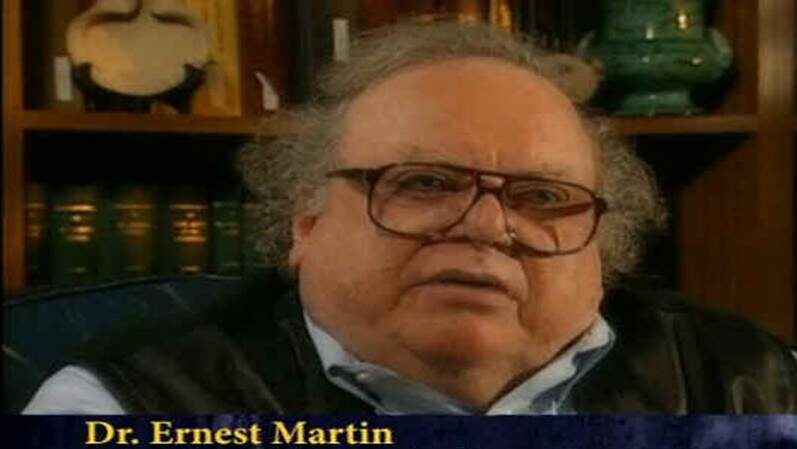Ernest L. Martin, Ph.D. wrote an article titled, “Lingering Idolatry in the Temple of God,” AskELM (as in Ask Ernest L. Martin about whom I previously wrote Nightmare on AskElm Street – angelic “Sons of God”?), September 1, 2000 AD which contains some interesting point, some thought provoking speculations and some very serious errors.
The article begins with statements posted/printed in bold which makes me think that they may an intro by the editor David Sielaff. In any case, it begins by stating, “The Sanctuary of God contained idolatrous images that God commanded to be included in the Tabernacle!” This denotes the entirety of the article’s miscomprehension as Ernest L. Martin erroneously dichotomizes the commandment against idolatry. The intro notes the Bible’s, “widespread condemnation of idolatry and its outward teaching of God’s adamant strictures against depicting Him in any physical fashion” and yet, the Sanctuary contained no such image as one depicting God.”

Finally, the intro states:
So stringent is the biblical theme of avoiding idolatry (or, idolatrous ways) that the Israelites were ordered even in the Ten Commandments NOT to make similitudes of ANYTHING in the heavens, of ANYTHING in the earth or of ANYTHING under the earth (that is, of ANYTHING within the seas and oceans) and they were ordered NOT to devote those images to any religious activity in any ritualistic manner.
The problem comes in the form of the little and simple word “and.” This statement dichotomizes the commandment by asserting that 1) the Israelites were ordered…NOT to make similitudes 2) and they were ordered NOT to devote those images. Such thinking is the result of mistakenly thinking in terms of verses rather than complete thoughts. Here is the relevant commandment:
Exodus 20:4: Thou shalt not make unto thee any graven image, or any likeness of any thing that is in heaven above, or that is in the earth beneath, or that is in the water under the earth:
Exodus 20:5: Thou shalt not bow down thyself to them, nor serve them: for I the LORD thy God am a jealous God, visiting the iniquity of the fathers upon the children unto the third and fourth generation of them that hate me;
Verse divisions are not inspired and, as in this case, they tend to break complete thoughts into disjointed fragments. Yet, the complete thought is clear as it consists of one complete comman which is that images are not to be made into idols. That is to say, images are not condemned (except for images of God which are never allowed) but employing them as idols is condemned. For details on the images that were commanded to be made, etc., see: On the Treatment of Images, part I and part II.
Ernest L. Martin then begins by noting that “the introductory statement of this research article is absolutely true” (whether written by himself or David Sielaff) since “we read throughout the Bible that God loathes idolatry in any form” but that “God actually commanded the Israelites to accept idolatrous rituals in the time of Moses that led the Israelites directly into the practice of idolatry (at least that is how Israel interpreted those commands of God).”
But is it the case the either 1) God actually commanded the Israelites to accept idolatrous rituals or 2) that this was not the case but that is how Israel interpreted those commands? Martin then points out:
…one of His most powerful prophets in the Old Testament, made the judgmental appraisal that the Israelites were commanded by Him to perform certain rites and to involve certain images that caused them to commit idolatry. And, even God admitted that those commands of His were NOT GOOD. Furthermore, the prophet who stated these things was backed up by another…those images that became idolatrous were ordered by God to be located within the very Temple of God.
We will see whether these things are so as we progress. The problem is continuous and confused references to for example, “That command of God concerning the introduction of those images into the Tabernacle and later Temple” which are not problematic as images are not condemned along with that “the Israelites were practicing a form of idolatry that involved certain spiritual beings that God had commanded to be used in His worship in the Sanctuaries” which is that which is condemned.
Ernest Martin writes that “Only later, in the time of Jeremiah and Ezekiel do we find God finally having such images banished from the Temple.” He claims that they “got rid of much of the idolatry that stemmed from initiating the earlier commands of God…God felt He had to give them some idolatrous teachings.”
